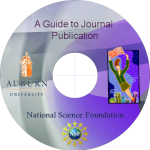

Publication Advice
The Survey participants were asked to openly respond to the following two questions:
- What is your description of an ideal journal paper?
- What advice would you provide young researchers as they prepare to begin the journal publication process?
In an effort to quantify these open-ended responses, the responses are organized according to subject category and displayed with the relative frequency. The following figure summarizes the frequency of each category referenced by the survey respondents. Additionally, representative quotes are cited for each subject category.

Summary of responses concerning successful publication
- Clearly Define Problem
"Well-defined problem statement is key"
"Clearly define the problem being studied"
"Frame an interesting problem"
"The paper starts with an interesting and well-motivated research question"
- Writing Style
"Young researchers must develop the art of being able to present ideas clearly and concisely to a general technical readership."
"Well structured and organized to accepted professional journal formats; well written so that it is clear and there is no ambiguity; concise but thorough"
"Clear, concise, and readable to people both inside and outside the specific area"
"Clear and concise reporting of the subject material"
- Contribution to Field
"An ideal journal paper should contribute to its field"
"Innovative ideas that provide a significant contribution"
"Makes a clear and original contribution"
- Understand State-of-the-Art
"Based on the most current ideas with a very good literature survey"
"The paper should have a solid hypothesis based on previously published papers"
"Well contrasted to current literature work"
- Proper Technical Development
"Use appropriate methodology to test the research question"
"Experimental design should be clearly defined in order to enable the reader to reproduce the method"
- Supported Conclusions
"Clearly explains the solutions and draws clear conclusions based on results actually shown in the paper"
"Appropriate technical basis for the conclusions"
- Know Publication Process
"Young researchers must develop skills in revising manuscripts to incorporate reviewer suggestions"
"Understand the time interval between submission and publication"
- Identify Impact/Application Area
"Identify at least one example of where it could have an impact or application"
"Contain an adequate indication of the likely impact area or extent of the analysis, observation, or insight"
- Submit to Proper Journal
"The biggest challenge is identifying what journals are appropriate for different types of papers"
"Understanding the different journals in a given discipline and aligning the research to the specific audience of the journal"
- Maintain Balanced Perspective
"Young researchers lack an understanding of the big picture. Therefore, they have trouble placing their work in perspective."
"Learn to properly divide time between teaching, research activities, service activities, and publication responsibilities"
